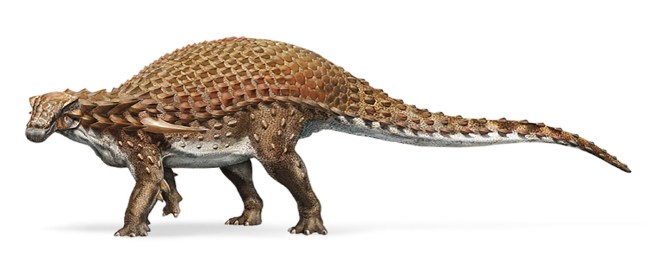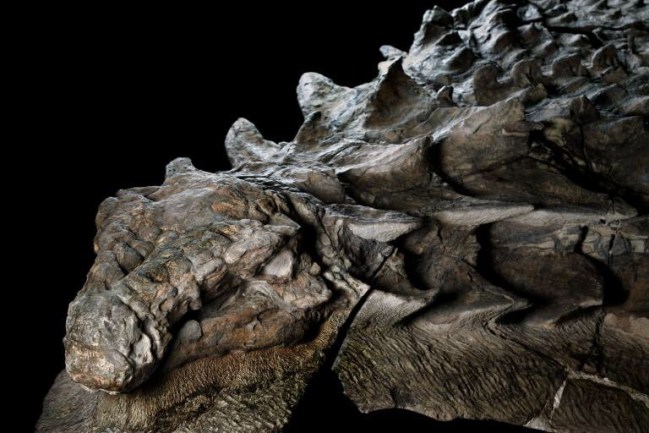Back some 112 MILLION years ago, 18-foot-long, 3,000-pound nodosaurs roamed what is now North America, Europe, Asia, and Antarctica and ate plants while using their armored back and two 20-inch-long spikes jutting out of its shoulders to protect itself from predators. Despite these prehistoric beasts dying off 112 MILLION years ago, we can now witness what one of these nodosaurs looked like thanks to the accidental discovery of the best-preserved armored dinosaur ever found.
In 2011, this magnificent ancient fossil was accidentally discovered by machine operator Shawn Funk at the Millennium Mine near Fort McMurray in Alberta, Canada. Funk noticed a large lump of dirt with an odd texture and a diamond pattern in one of his shovel loads. This incredible fossil was found in the oil sands of northern Alberta, which were once a seabed.
“It’s basically a dinosaur mummy — it really is exceptional,” said Don Brinkman, director of preservation and research at the Royal Tyrrell Museum in Drumheller, Alberta.
Jakob Vinther, a Paleobiologist from University of Bristol, said that it’s so well preserved it “might have been walking around a couple of weeks ago…I’ve never seen anything like this.”
For researchers, finding the fossil was like winning the lottery and believed to be a “one in a billion find.” The discovery is being called “the best preserved armored dinosaur ever found.”
“We don’t just have a skeleton… we have a dinosaur as it would have been,” postdoctoral researcher Caleb Brown told National Geographic.
https://twitter.com/SammyKSampson/status/863138012669943808
Over the past six years, the fossil has been painstakingly pieced together and finally made its debut at the Royal Tyrrell Museum of Palaeontology’s new exhibit, “Grounds for Discovery.” The museum technician Mark Mitchell worked on exposing the skin and bones of the nodosaur for more than 7,000 hours.
The nodosaur was believed to have died and shortly after was swept into a river, possibly because of a flood. The dino carcass was then carried out to sea where it sank to the ocean floor, becoming encased in mud where minerals both preserved and petrified the nodosaur’s remains.
Some have nicknamed the fossil the “sleeping dragon.”
"Best preserved armoured dinosaur in the world". New #GroundsForDiscovery opens @RoyalTyrrell. Full of accidental finds by Alberta workers. pic.twitter.com/sdy0YVbPiJ
— Brad MacLeod (@BradMacNews) May 12, 2017

